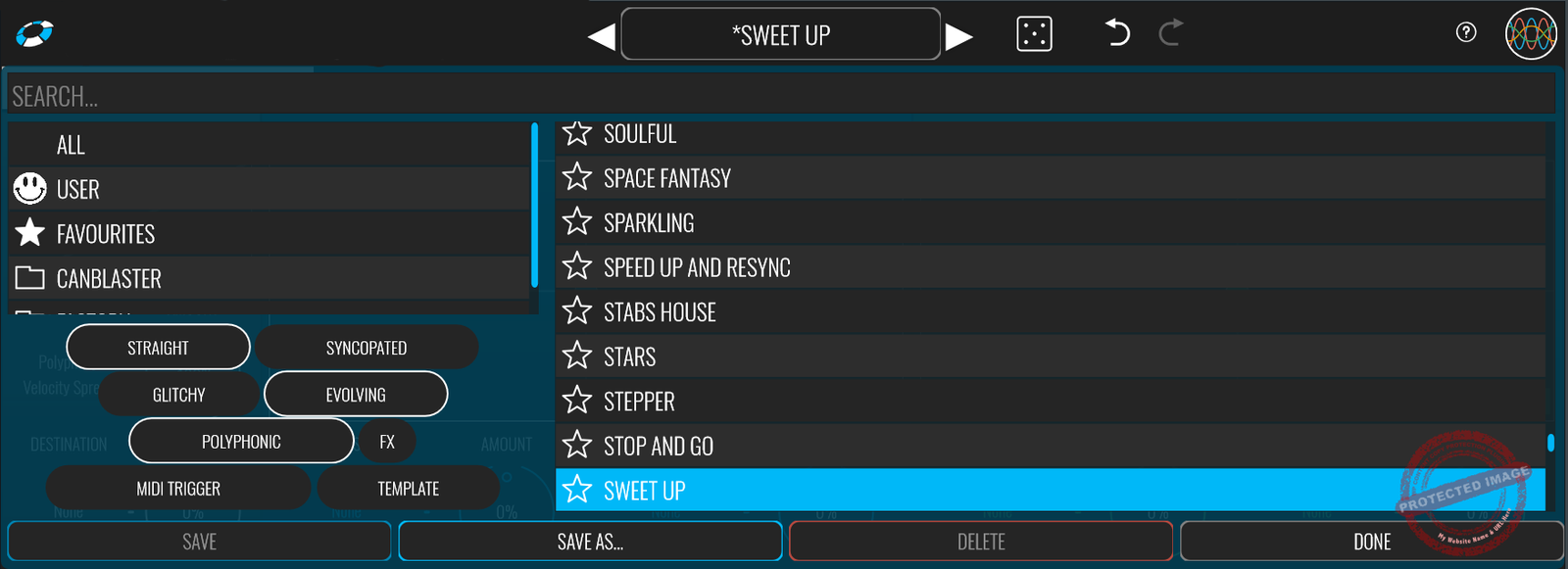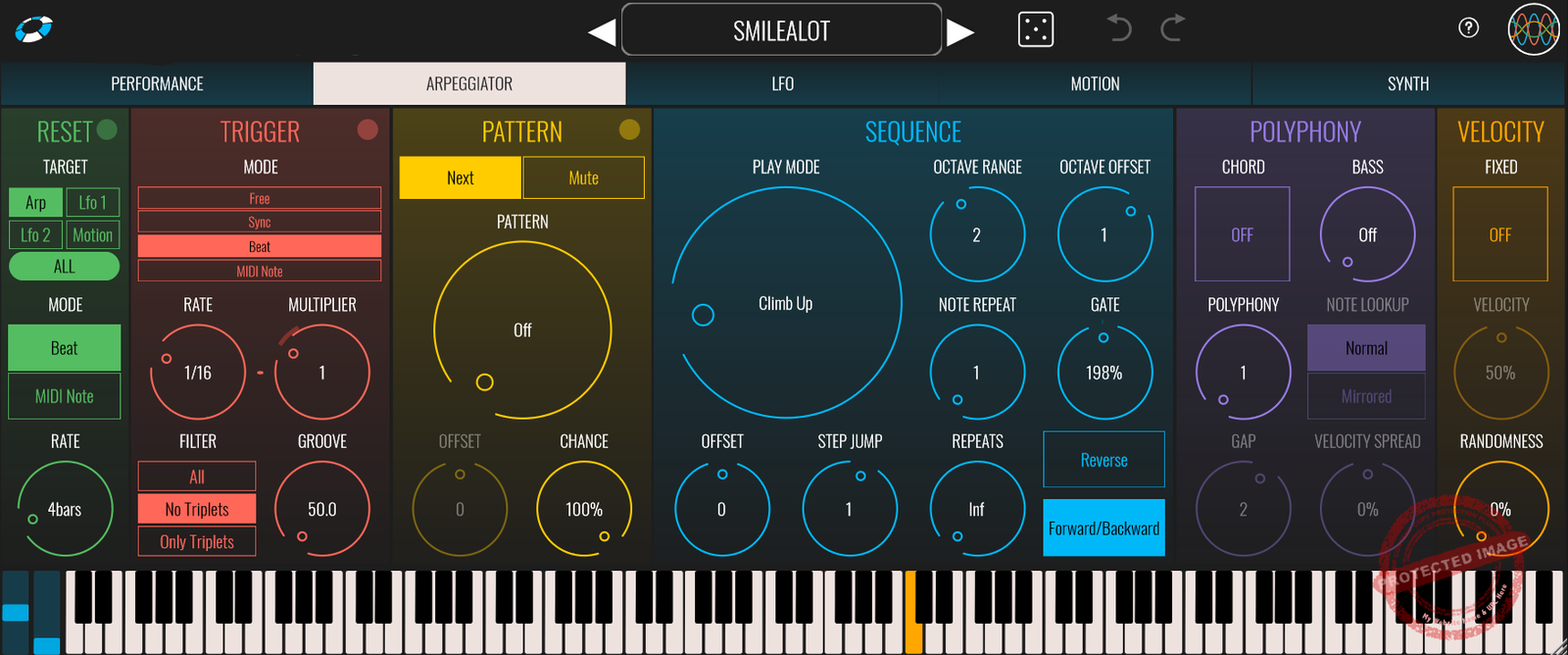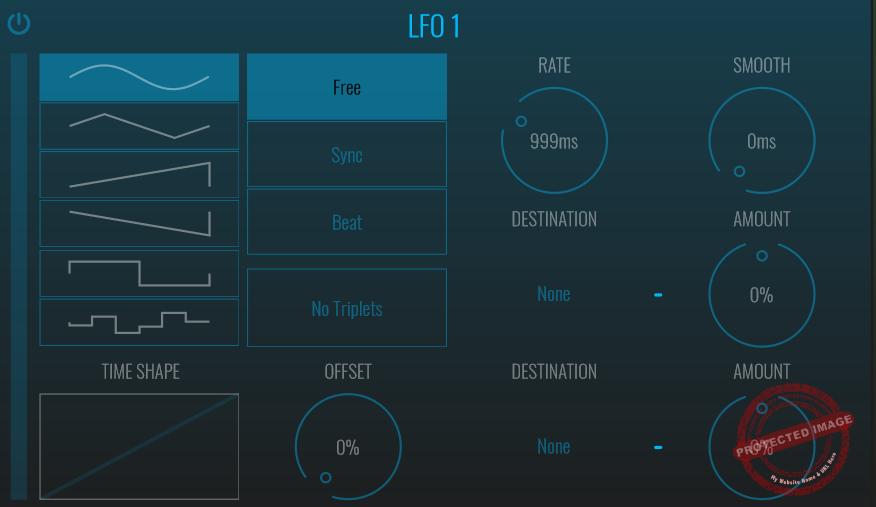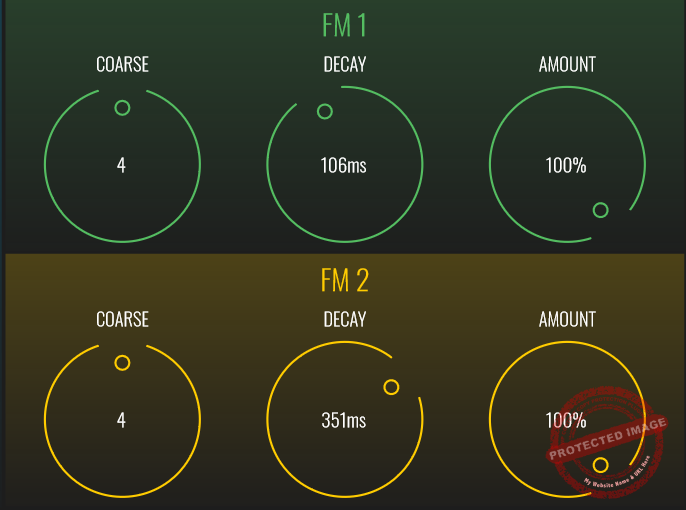BLEASS Arpeggiator is a creative powerhouse with unique arpeggio modes, versatile modulation, and an intuitive interface, perfect for breaking routine and inspiring new ideas. While the built-in synth and modulation depth could improve, it has great value for the price.
Pros
- Intuitive and fun interface, ideal for both beginners and advanced users
- Built-in FM synth provides quick and effective sound design options
- Unique arpeggio modes like "Walk Up" add human-like phrasing to sequences
- Extensive modulation with LFOs, Motion Sequencer, and XY pads for expressive creativity
- Affordable pricing, offering great value for its versatility and features
Cons
- The built-in FM synth lacks depth for advanced sound design
- Modulators cannot target the built-in synth or send MIDI CCs to external instruments
- Some sections, like the FM synth, could benefit from improved visual feedback
I tried the BLEASS Arpeggiator and reviewed it so you can decide if this plugin is worth it for you or not.
Sometimes, as producers, we just need to break the pattern and monotony, try something new or different, and get out of the familiarity of things. For those days, you may need plugins that are creative and offer something unique, and BLEASS Arpeggiator is exactly that. It is a very well-thought-out and elegantly designed instrument plugin that you can use with other synthesizers or by itself.
I personally felt immediately drawn into the plugin and was in wonder about the unique sound design experience it gave me and felt captivated by its potential. I will be breaking down how that came across, along with the best features of the plugin. I will also analyze the interface and workflow, so you get a solid idea of what it’s like to use BLEASS and whether to invest in it or not.
By the end, you’ll have a clear understanding of what it’s like to use BLEASS Arpeggiator and whether it deserves a place in your setup. To help you make an informed decision, I’ll also touch on some practical aspects like its compatibility, usability, and the availability of a free demo on the BLEASS website. So, without further ado, let’s explore the ins and outs of this dynamic arpeggiator.
Features
When I first opened BLEASS Arpeggiator, I knew I was in for a treat and understood that it isn’t an average “press a key and get some notes” type of plugin and is packed with features designed to shake up your workflow in the best way possible. From its creative arpeggio modes to a built-in FM synth and crazy modulation options, this thing can either really confuse you or really inspire you.
- Arpeggio Modes
First off, the arpeggio modes. BLEASS doesn’t stop at the classics like “up,” “down,” and “as played,” although they’re there if you need them. Instead, they’ve thrown in some really fun ones, like “walk up” and “climb up,” which mimic how a pianist might naturally noodle around with notes. These modes instantly develop cool patterns and a bit of randomness to your sequences.
If you’re a fan of retro gaming vibes, there are even modes inspired by the Sonic continue screen (yes, that Sonic) and others pulling from cinematic scores like “The Ecstasy of Gold.” Honestly, it’s like the plugin is winking at you while still delivering genuinely useful options.
- Built-in FM Synthesizer
Yes, it’s an arpeggiator, but it also comes with a built-in FM synth. Why? So, that you can dive in and start creating without needing to connect to anything else. The synth is super straightforward, and you can think of it as a baby version of the Ableton Operator.
There are two oscillators with basic FM controls, a delay section (because what’s an arpeggiator without some ping-pong delay?), and a filter to shape your sound. It’s not going to replace your go-to synths, but for quick ideas or layering, it’s incredibly handy.
- Motion Sequencer and LFOs
Motion Sequencer is where things can potentially get wild as it modulates pretty much anything you want. Want to mess with the playback rate in real time, it has got you covered. It also lets you add some randomness to your patterns.
I would use these with the 2 built-in LFOs, and you’ve got an arena of sounds that evolve, twist, and turn in ways you’d never expect. You can even have one LFO modulate the other, which sounds chaotic (and it is) but can lead to some of the most unique results I’ve ever heard from an arpeggiator. It’s one of those features that made me lose track of time just playing around.
- Polyphony and Rhythm Customization
BLEASS Arpeggiator doesn’t stop at just monophonic patterns and goes full polyphonic. You can play up to four notes at once and adjust the spacing between them for harmonic sequences that feel lush and layered.
On the rhythm side, the plugin gives you plenty of ways to spice things up. You can set note probabilities, control pattern resets, and even use external MIDI notes to trigger specific steps in your arpeggio. I had a blast setting up drum-style triggers that controlled the arp, which felt like having a bandmate who actually listens to you (for once).
- Performance-Friendly Features
Speaking of live performances, BLEASS thought of everything. The XY pad is quite an enjoyable tool for adding real-time expression, and you can link it to your mod wheel for even more hands-on control. The “hold” option lets you set it and forget it while you tweak other parameters.
Interface and Workflow
This is the section I was most excited to discuss because the layout and interface of the plugin truly are very thoughtful and straightforward. So, there are 5 main windows where most of the workflow takes place. I will discuss those one by one.
Arpeggiator
The arpeggiator window is broken into several sub-tabs: Reset, Trigger, Pattern, Sequence, Polyphony, and Velocity. Let’s take a closer look at each.
Its Reset Tab lets you manage chaos, syncing resets to beats or MIDI for tight patterns. I loved using this with drum loops for structure. The Trigger Tab decides when the arp kicks in, offering flexible modes like Free, Sync, and MIDI Note, plus fun rhythm tweaks like triplets and multipliers.
It also has a Pattern Tab that brings randomness and variation with a Chance knob and offset controls, keeping loops fresh. The Sequence Tab is all about note order, with 20 modes like “Climb Up” and “Walk Up” for creative phrasing.
Polyphony goes beyond basics with up to four simultaneous notes and bass layering, while the Velocity Tab adds dynamic expression, making sequences feel human. Intuitive yet powerful, this section is pure inspiration.
There’s also the Sequence Tab, where the notes themselves take center stage. The Sequence Tab is packed with Play Modes that range from the familiar (Normal, Up, Forward/Backward) to the quirky and unexpected (Walk Up, Climb Up). Modes like “Climb Up” add a rhythmic piano-like phrasing to your sequences, while “TR-inspired” patterns replicate classic step sequencer logic for tight, danceable grooves.
LFO
BLEASS’ LFO window offers 2 separate LFO sections, such that both LFOs let you choose from various waveforms, from classic sine and sawtooth shapes to more stepped and random ones, ideal for creating evolving textures or rhythmic modulations.
You can set the Rate (measured in milliseconds), toggle between Free, Sync, and Beat modes, and apply triplet restrictions to shape the timing.
There are typical parameters, like in the Time Shape section, where you can adjust the phase offset for unique syncopations. The plugin also has a Smooth knob to soften harsh transitions and dedicated controls, with which you can adjust destinations and modulation amounts.
When you use two LFOs simultaneously, you get pretty high creative potential, as, for example, assigning one LFO to pitch for subtle vibrato and another to filter cutoff for dynamic sweeps is incredibly useful. This dual-LFO setup makes crafting expressive, evolving sounds a breeze while keeping everything visually accessible.
Motion Sequencer
Motion Sequencer’s interface has a grid-based sequencer at its core, where you can easily draw automation patterns for up to two destinations simultaneously. Its Mode section allows you to sync the motion to the beat, MIDI notes, or even freeform.
You can adjust the Resolution to define the speed of your pattern, and the Grid Snap option is handy for precise editing or freehand drawing.
What I love most is the flexibility, wherein parameters like Length and Randomness help generate variations in motion while the Octave Range adds melodic depth.
Synth
After spending some time exploring the synth window, I can say there’s a lot to love here, but also a few areas where it could improve.
In my opinion, its Oscillator (OSC) section is clean and intuitive and gives you parameters like Coarse tuning and Decay knobs that offer just enough flexibility without overwhelming you with options. I particularly like how the decay setting allows for some snappy plucks or long, fading tones, which is simple but effective for laying the groundwork of your sound.
The FM section is where things get really interesting. Having two FM operators (FM1 and FM2) with independent controls makes it incredibly easy to experiment with harmonic complexity. What’s cool is that you can tweak the amount of modulation, which is subtle enough for smooth transitions but can get gnarly if you push it.
This section really shines for creating weird, evolving textures or aggressive basslines. However, if you’re new to FM synthesis, the controls might feel a bit abstract at first, and it could use better visual feedback for how the parameters interact.
While the interface is mostly intuitive, the FM section could benefit from better labeling or visual aids to help newer users understand the relationship between the operators.
Performance
XY controls are at the heart of the performance window. You can map parameters to the axes for easy adjustments as for instance, you can assign multiple parameters like filter cutoff or resonance to one axis and then swipe or twist them all simultaneously.
It is especially satisfying during live performances where small or dramatic parameter changes can completely change the mood of a track, as with 4 mappable XY pads, the creativity is limitless!
The Hold option also lets you lock in a particular sound or effect while freeing up your hands for other tasks. It feels especially practical when working with hardware controllers or external devices. For instance, you can set up a drone-like effect and keep it active without worrying about constant adjustments, which are ideal for layering textures live.
The inclusion of a Mod Wheel integration adds another layer of control, especially for those using MIDI keyboards or controllers. You can map the mod wheel to functions like note repeats or sync rate changes, which opens up exciting rhythmic variations.
Finally, its preset finder is also very easy to navigate and gives you various categories of sounds from which you can choose. 
First Impressions and Sound
From the moment I started noodling with BLEASS Arpeggiator, it was clear this plugin isn’t just about pumping out notes in a fancy order. No, this thing has character. It feels alive, like it’s in on the jam session, throwing in unexpected ideas that somehow just work.
The built-in FM synth gets a standing ovation from the get-go. Sure, it’s simple with 2 oscillators, 1 filter, and some delay choices, but that’s the beauty of it.
No more endless tweaking and menu diving! More like, “What if I twist this knob? Oh, that’s cool!” The sounds you can pull from it are surprisingly broad: delicate, twinkling textures to gritty, almost aggressive tones that slice right through a mix.
I really liked the punchy and responsive feel of the synth, while the decay settings were another favorite of mine with the snappy, percussive blips to drawn-out, ambient washes.
Arpeggiator modes, as I mentioned above, like “Walk Up” and “Climb Up,” give your sequences a playful, human-like phrasing, almost as if someone’s sitting at a piano, riffing away.
The arpeggios are fluid, dynamic, and, dare I say, emotional. I found myself layering the reverse playback option on a classic mode like “Up” and suddenly had something that felt both nostalgic and fresh. It’s rare for an arpeggiator to inspire feels, but here we are.
Compatibility
BLEASS Arpeggiator is available in AAX, VST3, and AU plugin formats and is compatible with Windows 8 and later and macOS 10.9 and later (64-bit only) (including macOS 11 Big Sur and M1/M2 processors) operating systems.
Final Thoughts
So, I will start off with this. BLEASS feels like a collaborator! I loved how it made me think differently about sequencing and sound design. The arpeggio modes and randomization tools helped me break free from the “same old, same old,” and the presets were so cool. They immediately gave me so many interesting ideas.
I wish the modulators could target the built-in synth or send MIDI CCs, as it would bring great creative possibilities! And while the interface is mostly brilliant, a few areas, like the FM section, could benefit from more visual feedback. Still, these are minor gripes in the grand scheme of things.
Ultimately, BLEASS Arpeggiator is one of those plugins that feels like a gateway to happy accidents. So, I think you’d embrace this unit if you want to add a dash of creativity and unpredictability to your tracks! In the end, I think it is totally worth it!

Shaurya discovered his passion at the intersection of writing and music. Starting his career as a songwriter and rapper, he gradually picked up FL Studio and soon delved deep into the world of audio engineering and music production. Based in Delhi, India, he has worked with top studios, been featured on Red FM, garnered millions of streams on Spotify, and released music with major labels like Sony and Hitz.








